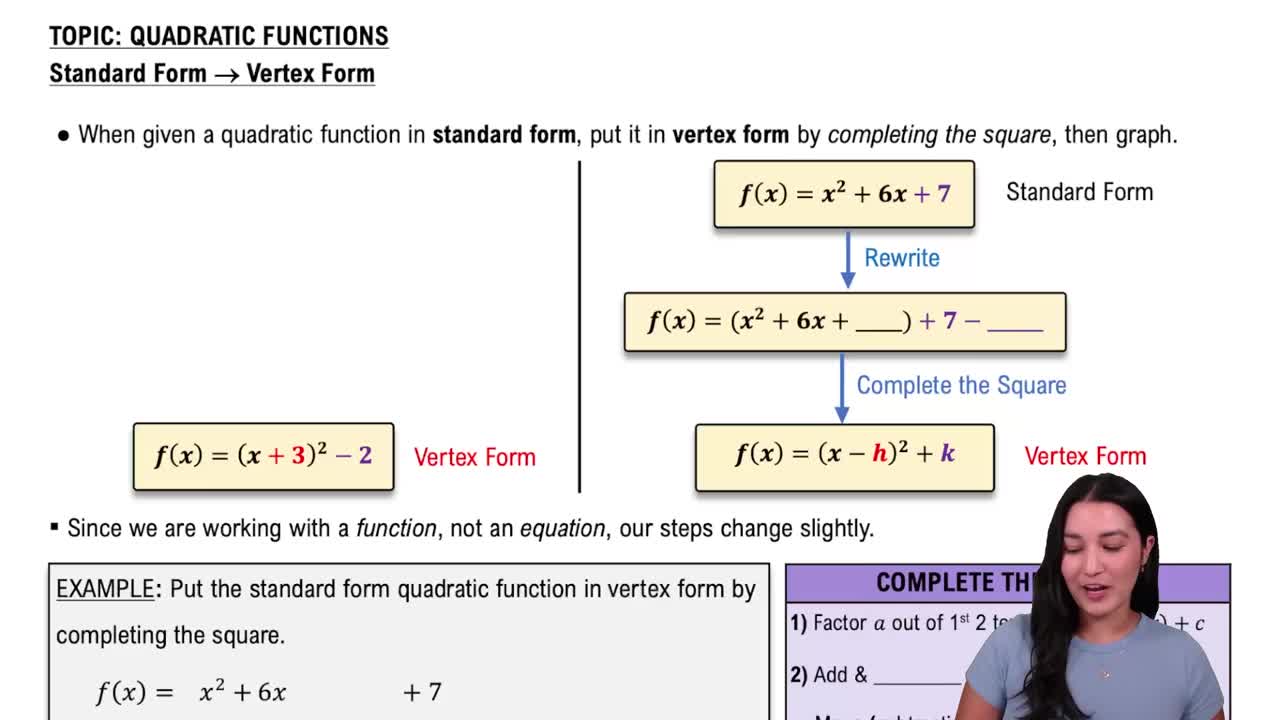Here are the essential concepts you must grasp in order to answer the question correctly.
Conic Sections
Conic sections are the curves obtained by intersecting a plane with a double-napped cone. The primary types include circles, ellipses, parabolas, and hyperbolas. Each type has a distinct standard form and properties, which help in identifying the nature of the equation. Understanding these forms is crucial for classifying the given equation.
Recommended video:
Geometries from Conic Sections
Standard Form of Quadratic Equations
Quadratic equations can be expressed in standard form as Ax^2 + Bxy + Cy^2 + Dx + Ey + F = 0. The coefficients A, B, C, D, E, and F determine the type of conic section represented by the equation. Recognizing the roles of these coefficients is essential for identifying the equation without completing the square.
Recommended video:
Converting Standard Form to Vertex Form
Discriminant
The discriminant of a conic section is derived from the coefficients of the quadratic equation and is given by the formula D = B^2 - 4AC. This value helps determine the type of conic: if D < 0, it indicates an ellipse; if D = 0, a parabola; and if D > 0, a hyperbola. Analyzing the discriminant is a key step in classifying the given equation.
Recommended video:
 Verified step by step guidance
Verified step by step guidance Verified video answer for a similar problem:
Verified video answer for a similar problem:



 6:15m
6:15m